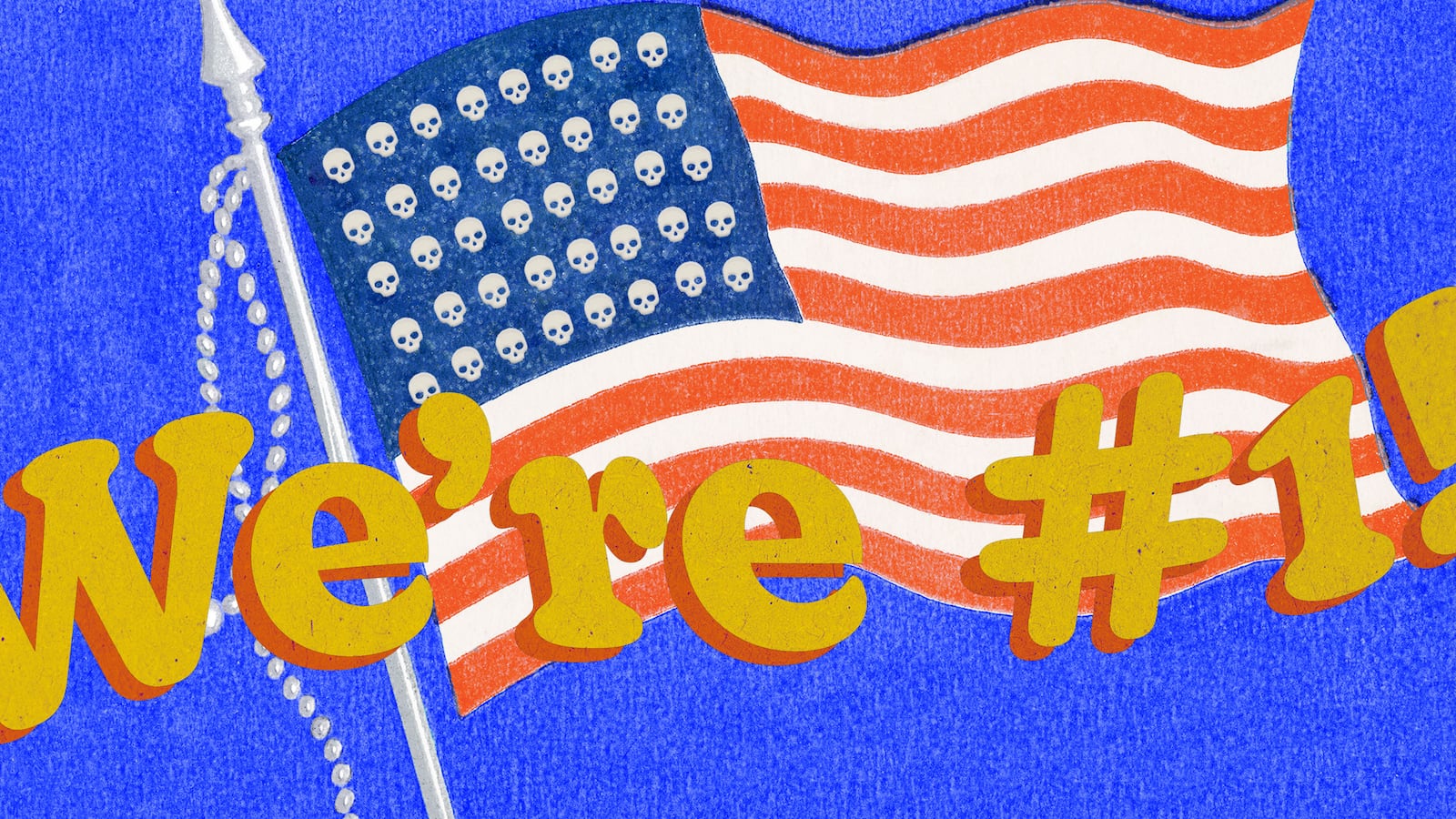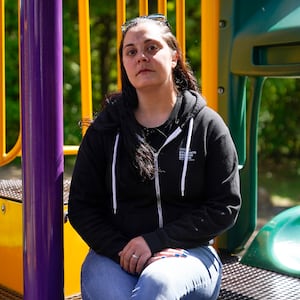The American homeland has never been a modern wartime battlefield. That distinguishes us from all other major participants in two world wars. And yet the homeland is now the scene of far greater human carnage on a daily basis than any other rich nation would find tolerable—not just slaughter by guns, but by the misuse of drugs and the mismanagement of a virus.
If you are looking for a real definition of American exceptionalism, this is it.
Somehow we have become accustomed to living with a deadly trifecta. Just look at the numbers.
In 2020 (the last year for which the CDC has complete data) more than 45,000 Americans died from gunfire, a 25 percent increase from 2010.
In 2019, according to the Department of Health and Human Services, 70,630 people died from a drug overdose, and more than 10 million people “misused” (a euphemism for overdoses, both fatal and non-fatal) opioid prescriptions.
Between June 2021 and March 2022, according to the Kaiser Family Foundation, there were 234,000 preventable deaths from COVID-19—representing 60 percent of the deaths since vaccines became available. “Preventable” includes many people who died because they chose not to be vaccinated.
Each of these scourges has its own pathology. But what makes them egregious—on top of the numbers—is that together they represent a peculiarly American breakdown of what in other advanced democracies are considered norms of behavior.
If these were the numbers of deaths on a battlefield, witnessed and recorded as such, the total of 349,000 over no more than a year, would rank as horrific. (The total of American military deaths in four years of World War II was 405,399, and that was drawn from a far smaller total population.)
Life has become very cheap when it can be snuffed out at this rate without the country really noticing. But death on this scale in America has achieved a steady state—the scientific term describing how “a dynamic equilibrium occurs when two or more reversible processes occur at the same time.”
Reversible? Think about it. How reversible are these three conditions—deaths from guns, overdose, and COVID?
We’re right in the middle of one of those gun outrages where there is a cascade of cant in Washington, D.C.—yet even one the most ardent advocates for greater gun controls, Democratic Sen. Chris Murphy of Connecticut, admits he won’t be able to get any significant changes, however appalling the blood-soaked classrooms become. No, this chain of tragedies is not reversible, as long as the coercive power of the gun lobby basically outvotes the people. Does this mean we have, as a society, reached a new and permanent level of indifference to human suffering, that the sheer repetition of mass shootings, whether in schools, churches, synagogues or supermarkets has deadened the senses?
Behind two of the scourges, guns and opioid addiction, are venal corporate interests, but they have fared differently. Nothing holds back the gun manufacturers. Business has never been better. According to the Annals of Internal Medicine, between January 2019 and April, 2021, 7.5 million American adults became new gun owners—that’s nearly 3 percent of the population.
In contrast, Big Pharma is being forced into paying billions to compensate for the ravages of opioid addiction. This week, in the latest settlement, two companies, Teva and Allergan, made a settlement of $161.5 million with the state of West Virginia, which has suffered more than most states as a result of the opioid epidemic. Patrick Morrisey, the state’s attorney general, said the money would help to make sure “we don’t lose another generation to senseless death.”
Big Pharma has been very effective at lobbying to keep prescription drugs more expensive than anywhere else in the world, but it hasn’t been able to defend the ruthless promotion and profiteering it applied to opioids.
And here’s the decisive difference between the two forms of death: The gun makers (and their advocates) prosper behind the claim that the agency of the weapon resides in the gun owner, not them, while the drug manufacturers had no such defense—they delivered the bullet themselves, knowing that it was addictive and fatal if prescribed unscrupulously. Also, of course, the right to use opioids is not enshrined in any constitutional amendment.
It's hard to say how many of the preventable COVID deaths were directly attributable to vaccine resistance. Some were the result of racial inequities in the availability of health care and reliable information, compounded by misinformation spread on social media.
Looking for a corporate hand behind the anti-COVID vaccine movement comes down to one company, Fox News. Tucker Carlson and Laura Ingraham both cynically encouraged fake stories about vaccines killing people and played up doubts about whether they even worked. This followed the way in which Fox News slavishly echoed Trump’s mocking of science and his dismissal of COVID as nothing more than flu, and gave air time to quackery.
But they were, in large part, preaching to the converted. Anti-vaxxers are equally influenced by something that the citizens of other liberal democracies find puzzling: a resistance to voluntary conformity dressed up as an assertion of basic individual rights. Not getting vaccinated (and not wearing a mask) are—much like the freedom to be armed—held to be part of a sacred American birthright, even if exercising it might kill you, or others.
When it comes to the actual defense of life as a political movement, it is ironic that in America it has come to apply more to the unborn than the living. The “right to life” movement is now anticipating its moment of victory, thanks to an aggressively atavistic Supreme Court. And, in the same spirit, the court is as ready to back the gun lobby as it is to kill Roe v. Wade. Don’t look for the milk of human kindness there.
In wars, the dead are commemorated as a way of deterring future wars. War graves concentrate the carnage in a powerful visual frame that everybody responds to. I have visited the cemeteries that lie behind the D-Day beaches in Normandy and beyond. Their scale imposes on us the obligation of remembrance, to never forget the sacrifice made by thousands of Americans in the cause of liberating Europe.
America itself has now become like a war zone, but the graves are widely dispersed, not concentrated. From Columbine in Colorado to Sandy Hook in Connecticut, from Parkland in Florida to Uvalde in Texas, the children and teenagers taken out in mass shootings are or will be buried where their families choose—in moments of a terrible individual grief that is not being translated into an act of national remembrance powerful enough to force an end to this avoidable slaughter.
As a result, America can no longer go out into the world as an exemplar of advanced and civilized societies, talking about its exceptionalism, when it has on its own hands the blood from such a breakdown of basic human values.








